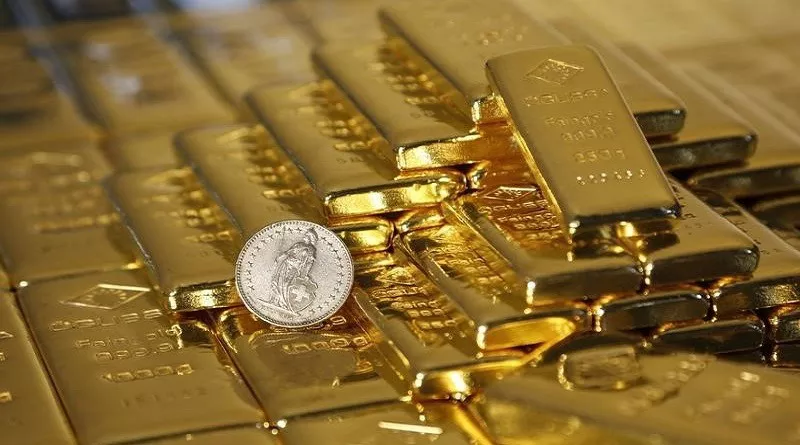Gold prices soared to an all-time high on Thursday, driven by escalating tensions in the Middle East and mixed signals from the US economy, which kept traders speculating about potential interest rate cuts by the Federal Reserve.
Record Highs Amid Conflict
The price of gold reached a staggering $2,696.78 per ounce, marking a new record as geopolitical unrest unfolded in the Middle East. The surge followed Israel’s announcement of the killing of Hamas leader Yahya Sinwar, who had played a pivotal role in orchestrating the recent attacks on southern Israel. This development has heightened concerns about ongoing violence and instability in the region, pushing investors toward safe-haven assets like gold.
In times of conflict and uncertainty, investors typically gravitate towards gold, which is perceived as a stable store of value. This trend reflects a broader market response to geopolitical crises, where commodities like gold often outperform due to their perceived safety.
Economic Indicators Influence Market Sentiment
On the same day, economic data from the United States painted a mixed picture of the nation’s economic health. Retail sales figures for September exceeded expectations, indicating a stronger consumer spending environment. The US Commerce Department reported a significant increase in retail activity, suggesting that consumers are still willing to spend despite rising prices and economic uncertainties.
Moreover, new data revealed an unexpected decline in jobless claims for the week, despite the previous surge caused by the impact of Hurricane Helene in Southeastern states. The latest report from the US Labor Department noted a drop in initial claims, further complicating the economic landscape.
These economic indicators have contributed to ongoing discussions among traders and analysts regarding the Federal Reserve’s potential monetary policy moves. Many are anticipating a continuation of the Fed’s rate-cutting strategy, especially as inflationary pressures persist.
Analysts Weigh In on Gold’s Performance
Bob Haberkorn, a senior market strategist at RJO Futures, commented on the economic data’s impact on the gold market. “These were good data points,” he noted, referring to the positive retail sales and jobless claims figures. Haberkorn explained that the mixed economic signals support the view that the Federal Reserve may still pursue further rate cuts, which tend to benefit gold prices as lower interest rates reduce the opportunity cost of holding non-yielding assets like bullion.
As gold continues to rise amid external pressures, the interplay between geopolitical developments and domestic economic data will likely remain a focal point for investors. The persistent volatility in the Middle East adds an additional layer of complexity, further influencing market dynamics.
The Broader Market Response
The rise in gold prices is not occurring in isolation. Other commodities and financial markets are also responding to the dual pressures of geopolitical tension and economic uncertainty. For instance, oil prices have seen fluctuations in response to developments in the Middle East, affecting energy markets worldwide.
Market analysts are closely monitoring how these global events may affect investor sentiment and market stability. A prolonged period of unrest in the Middle East could lead to further increases in gold prices, as historical trends show that prolonged conflict typically drives up demand for safe-haven assets.
Global Implications of Rising Gold Prices
The implications of rising gold prices extend beyond immediate market reactions. A stronger gold market can signal increased economic anxiety, prompting central banks and investors worldwide to reassess their strategies. Countries that rely on gold reserves may find themselves in a stronger position, potentially influencing global currency valuations.
Additionally, higher gold prices can impact mining companies and the broader mining sector. As gold becomes more valuable, mining operations may become more economically viable, leading to increased exploration and production activities. This, in turn, could have ripple effects across various industries, including technology and manufacturing, where gold is used in electronics and other applications.
Conclusion
As tensions in the Middle East continue to escalate and US economic data reveals a mixed bag of indicators, gold’s rise to new heights underscores the precious metal’s role as a safe haven in uncertain times. Investors remain vigilant, weighing geopolitical risks against economic signals that may influence Federal Reserve policy.
In this climate of uncertainty, the future trajectory of gold prices will likely hinge on ongoing developments in both the geopolitical landscape and domestic economic performance. As traders navigate these complex dynamics, gold will remain a focal point for those seeking stability amidst volatility. The situation will require careful monitoring, as both geopolitical tensions and economic indicators continue to evolve.
Related topics:

